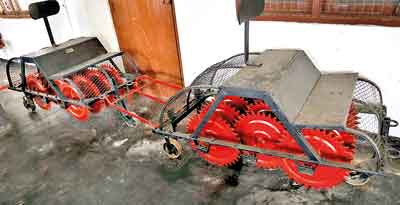The making of ‘Hardy boys’
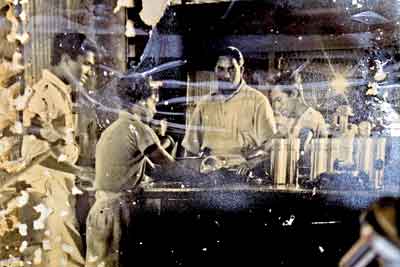
Laboratory work in the days of yore
Hundreds of students, clutching files or with bags slung over a shoulder troop into the lecture halls of the Hardy Advanced Technological Institute in the bustling town of Ampara each weekday morning.
Do they wonder whose footsteps they are re-tracing? Surely they do, for every nook and cranny of this institute set amidst 128 acres, dotted with huge kohomba, burutha, palu and weera trees, is replete with the memories and the work of its Founder-Director Prof. Evan Alan Hardy.
While a statue of Prof. Hardy greets all visitors, in the shade of an old Nuga tree his ashes lie buried in the sprawling garden of the Hardy Institute, far from his home across the seas. And to remind the students of the close and inextricable bond between the institute and the Gal Oya Multipurpose Scheme which became the ‘field class’ of the institute, a large clay model of the latter is displayed on the first floor of the administrative building.
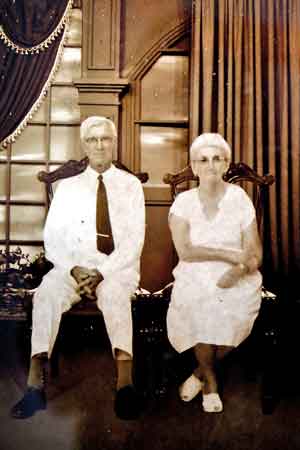
Legendary Prof. Evan Alan Hardy and wife Lois
“We have 1,800 students who study for six different types of diplomas,” says current Director of the Hardy Institute, U.V.S. Rohitha, taking a look at the present, before traversing into the past.
These include the Higher National Diplomas in Technology (HNDT) in Agriculture and Information Technology and Higher National Diplomas (HND) in Accountancy, Management, English and Tourism & Hospitality Management all taught and delivered under the Sri Lanka Institute of Advanced Technological Education of the Higher Education Ministry.
It was a far cry back in 1956 when the institute had its beginnings imparting knowledge under four programmes – Agricultural Engineering, Mechanical Engineering, Civil Engineering and Electrical Engineering.
The person chosen to set up the institute was Prof. Hardy, no young man but in his 60s, with indefatigable vigour and enthusiasm. Having been born in Sioux City in the state of Iowa in the United States of America, he had grown up on a farm, later obtaining an Agricultural Engineering Degree followed by a Master’s Degree from the State University of Iowa. It was to the University of Saskatchewan in Canada that he went as a lecturer, securing his Ph.D from there and serving that campus for 31 long years while being promoted regularly and finally holding the post of Dean of his faculty.
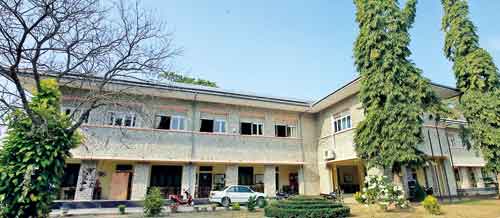
The greystone building of the Hardy Institute. Pix by M.A. Pushpa Kumara
The opportunity to serve Ceylon, which he took up readily, accompanied by his wife, Lois Hicks, came through the Food and Agriculture Organization (FAO) in 1951. His first posting was as an advisor to the Department of Agriculture based at the Maha Illuppallama Agricultural Research Centre close to Anuradhapura.
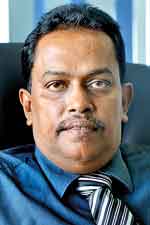
Director U.V.S. Rohitha
By that time the Gal Oya Multipurpose Scheme was underway and the government requested him to produce technical human resources to sustain the massive scheme.
Prof. Hardy set about this task with heart and soul, landscaping the premises leaving all the trees and rocks already there intact, planning and organizing the courses of instruction and deciding on the layout of the buildings, all with unstinting support from the Colombo Plan and the FAO. The elegant administrative building had been built with stone similar to the greystone used back at the University of Saskatchewan, most probably to give Prof. Hardy a feeling of home.
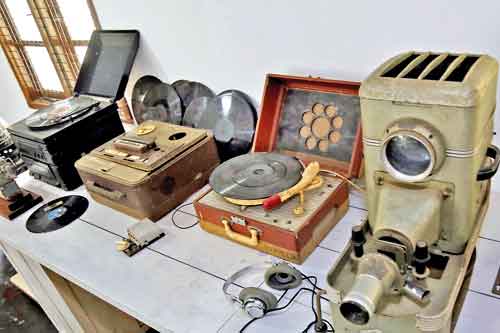
Hardy Museum exhibits
Reams have been written about Prof. Hardy who was at the institute from January 15, 1955 until his death in 1963. He set about his task “not only making engineers of men who have no mechanical experience but getting them to assume their responsibility on-the-job” with a batch of 28 initially. Lessons were interspersed with frequent field visits to a “live” engineering environment with not only Ceylonese but also students from Burma, Malaysia, North Borneo, Philippines, Thailand, Vietnam and Singapore benefiting and getting a firm grounding.
While many have paid tribute to him as the “greatest gift from Canada” to this country, a former Canadian High Commissioner, D.M. Collacott, has said that “whatever Prof. Hardy put his hand to, whether it be advising the rural farmers in better farm methods or teaching eager young men and women about the ingenuities of dam construction, he did so with an enthusiasm and dedication which infected all those who worked with him”.
The ‘Hardy Philosophy’ was simple – hard and committed work by both the staff and the students, strict time schedules and a keen interest in the welfare of others.
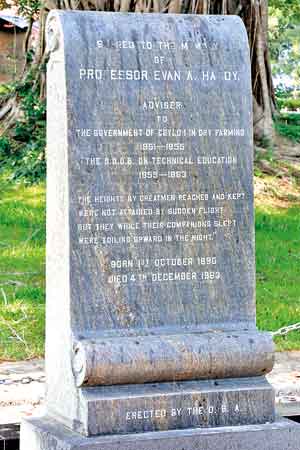
Memorial to Prof. Hardy
“His boys” have recalled how he woke up at 5 a.m. to collect the leaves littering the ground with a sharpened stick and how the Hardy couple welcomed them to cups of coffee at their home, while others talk of how he would shop for a “great quantity” of butter, cheese, biscuits and chocolates to feed them as the hostel food was not that appetizing and how he fought for electricity fearing that his boys when walking between the base workshop and the institute along a lonely stretch would “collide” with elephants in the dark.
In a corner of the institute’s vast premises is the ‘Hardy Museum’ preserving for posterity his desk and wall-clock as also the gramophone to which he and his wife would listen of a quiet evening and the crockery with the Gal Oya Scheme symbol – Inginiyagala – still clearly decipherable, that was laid out on their dining table.
Alongside these precious personal items of the couple are also plant protection equipment such as power dusters more than 70 years old and the oven used for soil testing.
Meanwhile, the older people of Ampara talk of how the coffin of Prof. Hardy who died of a heart attack in 1963 had been carried in procession from the Kachcheri to the institute amidst a milling crowd of teary-eyed students. He had been cremated in the institute’s grounds and his ashes interred under the spreading Nuga tree.
Many believe that the spirit of Prof. Hardy still walks the precious grounds where he nurtured and trained many to take up important positions not only at Gal Oya but also across the world.
| Rare exhibits | |
|
Very rare are two exhibits at the Hardy Museum – horse-driven, take heed they are not cattle-driven, ploughs. Complementing these exhibits is a Landmaster tractor powered by kerosene, after being started with petrol, believed to be 1 of just 5 imported to Ceylon by Brown & Company. |



